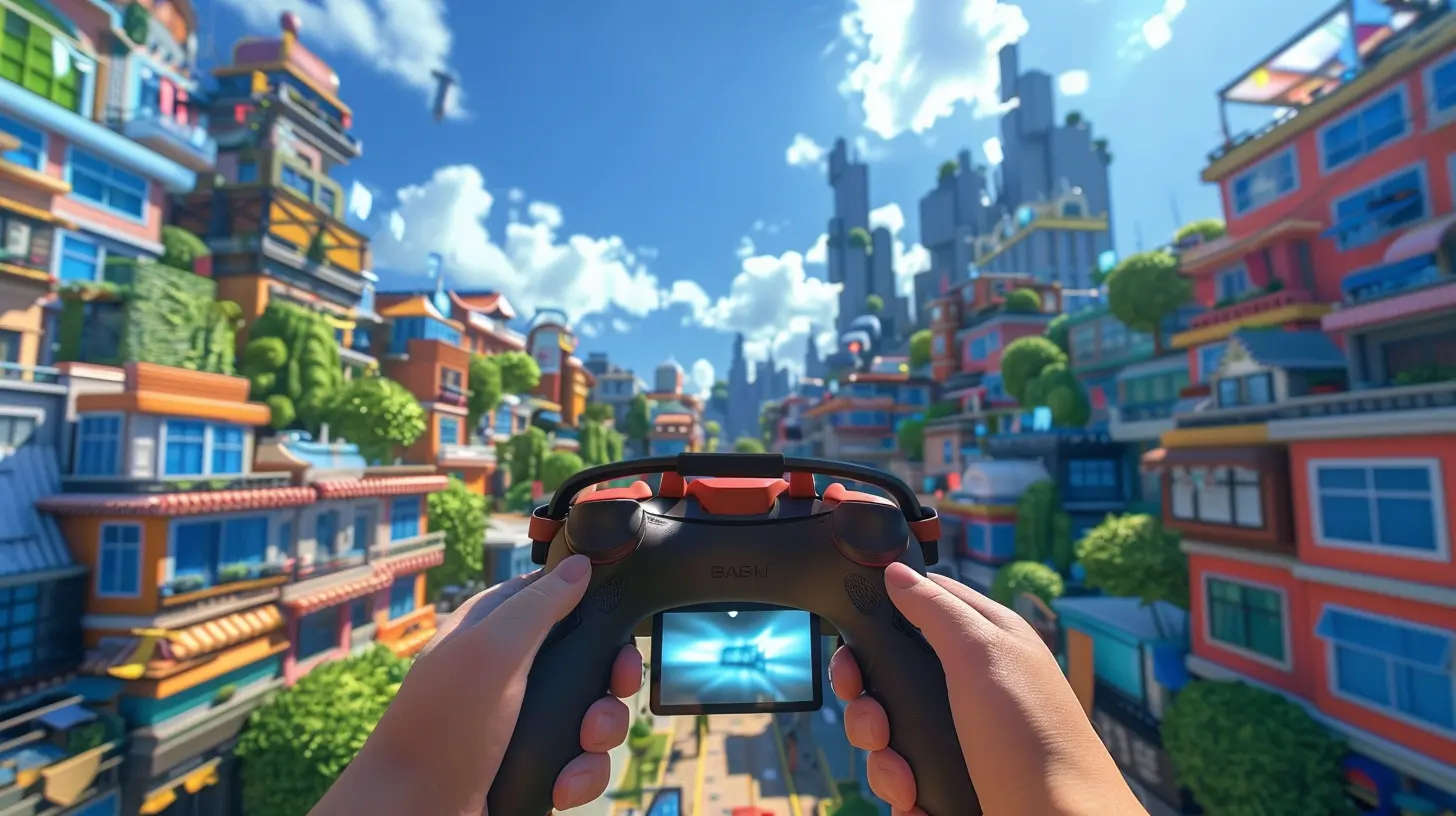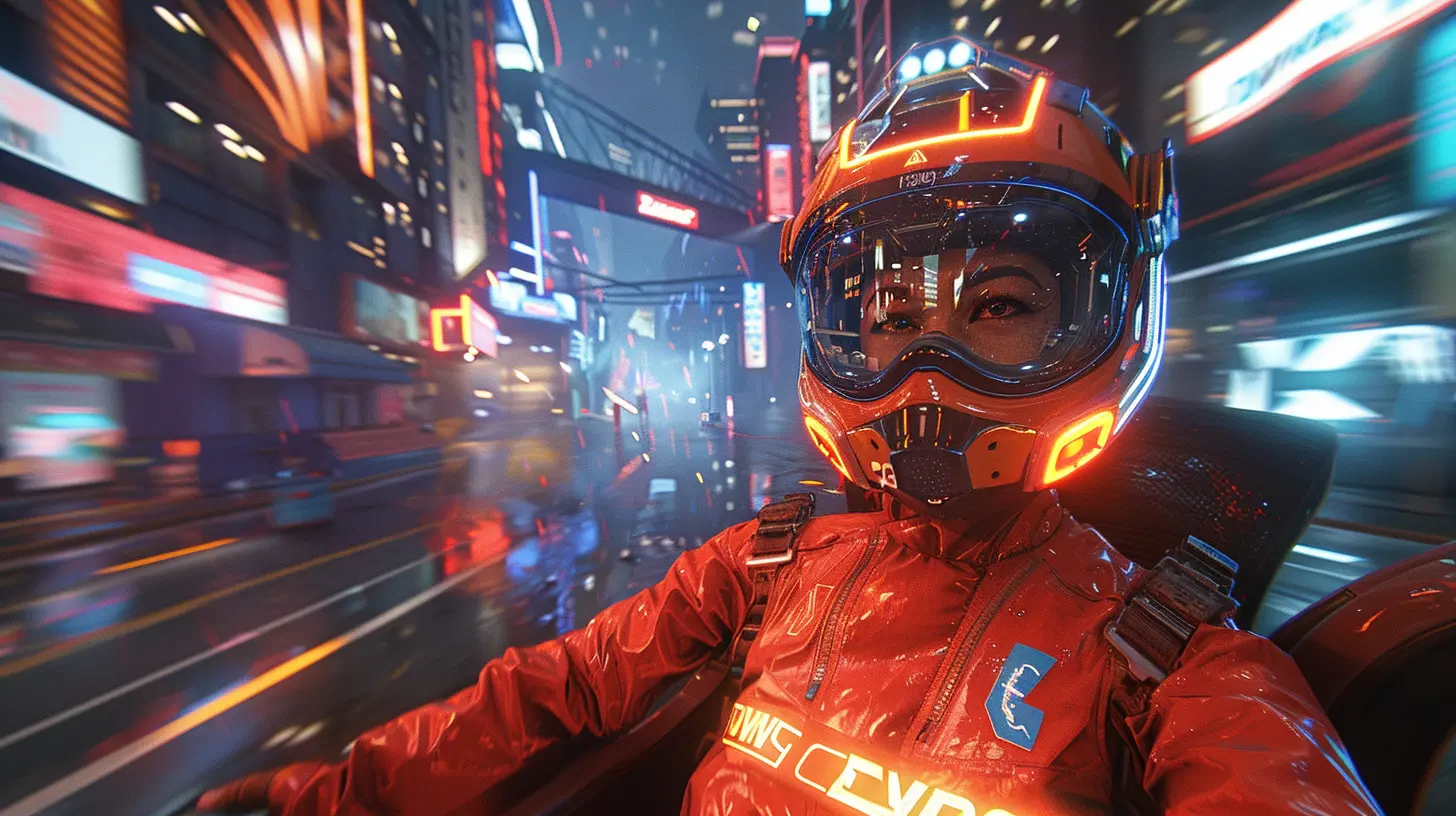Speedrunning in VR: Can Fast Play Exist in Virtual Spaces?
31 July 2025
Speedrunning has taken the gaming world by storm over the past decade. From classic platformers to massive open-world adventures, gamers love pushing the boundaries of skill and speed. But now, there's a new frontier in sight — virtual reality. That immersive, all-around-you playground is starting to attract speedrunners too. So the big question is: _Can fast play really exist in virtual spaces?_
Buckle up, because we’re diving helmet-first into the wild world of VR speedrunning, where agility meets immersion and every second counts — even if you’re dodging furniture IRL.
What is Speedrunning Again?
Alright, let’s do a quick refresher. Speedrunning is the art (and science) of finishing a video game — or a particular part of it — as quickly as possible. Players often master routes, glitches, and muscle memory to shave off milliseconds from their times. Think Olympic sprinters, but with controllers in hand instead of running shoes.What makes it so addictive? It’s the perfect playground for competition, innovation, and showing off pure gaming skill. And better yet, the speedrunning community is packed with knowledge sharers, streamers, and tech wizards constantly discovering new ways to cut time.
VR Gaming: A Totally Different Beast
Now let’s throw virtual reality into the mix.VR isn’t just about faster graphics or wild storylines. It changes _how_ we move, _how_ we look around, and even _how_ we interact with in-game objects. You’re not just pressing 'A' to jump — you’re literally ducking, reaching, turning, and grabbing. This isn’t your mom’s platformer anymore.
So, what happens when you try to speedrun a game that requires real physical movements? Suddenly, you're not just racing against a timer, you're racing against your own stamina and coordination.
Still, people are doing it. And it’s wild to watch.
The Unique Challenges of Speedrunning in VR
1. Physical Limitations
Let’s be honest — speedrunning _is_ intense. But VR adds a whole new layer. It’s one thing to mash buttons for hours; it’s another to physically swing your arms like a maniac for 35 minutes straight.You’re squatting, spinning, reaching, maybe even crawling — and doing it all faster than the game probably intended. That stamina factor? It matters now. Speedrunning in VR is basically a cardio workout in disguise.
2. Motion Tracking Woes
Ever had your VR headset or controllers act up mid-game? Imagine that during a world-record attempt. Unlike regular speedrunning, VR depends on perfect sensor alignment and controller tracking. If your real-life hand doesn’t exactly match your in-game hand — you’ve just lost precious time.And don’t even get me started on room size. A smaller play space can limit how creative you can get with movement strategies.
3. Game Design Constraints
Most VR games aren't built for speedruns. They're designed for immersion, pacing, and often slower, deliberate exploration. Try rushing through Half-Life: Alyx and you might find the game yelling at you to stop and admire the artwork.Also, VR doesn’t always let you skip cutscenes or fast-travel the way traditional games do. So the options available for time-saving tricks? They’re way more limited.
But Hold Up — There's Potential
So yeah, it's a challenge. But don’t let that fool you — VR speedrunning has some serious upsides.1. Freestyle Movement = Creative Routes
In VR, you don’t have to stick to predefined paths. You can physically reach and grab things in weird ways, and sometimes bypass game mechanics altogether.Let’s say there’s a door that takes 30 seconds to open. In VR, maybe you can glitch your hand through a wall, grab an object from the other side, and skip it entirely. These kinds of real/machine hybrid exploits are becoming a thing — and they’re mesmerizing to watch.
2. Player Control on a Whole New Level
Precision mouse aiming is great, but what about full 360-degree control with your actual body? In VR, it’s all about coordination. Once you master movement, you can fly through levels faster than you’d think possible.Some players have managed to sprint through VR titles like SUPERHOT VR or Boneworks with ninja-like reflexes. It's not just speed — it's style.
3. A Growing Community
Yep, there’s a whole niche of VR speedrunners out there crafting their own leaderboards, categories, and software tools. It’s small but growing super fast.Platforms like Speedrun.com are slowly adding VR-specific categories, and yes, Twitch streams with VR runners slapping zombies while timing split seconds are every bit as entertaining as they sound.
Games That Are Actually Fun (and Fast) in VR
Not every VR game needs to be a 15-minute story experience or an endless rhythm challenge. Some are _built_ for movement and flow — perfect for runners hunting their next PB (personal best).Here are a few games where VR speedrunning is not only possible but incredibly fun:
🎯 SUPERHOT VR
Probably the poster child for VR speedrunning. The time-still-moves-when-you-do mechanic creates this beautiful harmony between slow-mo strategy and lightning-fast execution. Watching a skilled runner take down enemies in seconds while dodging bullets is like watching The Matrix on fast forward.🔫 Boneworks
Boneworks is physics chaos in a headset. Think puzzles, enemies, and platforms, but all powered by realistic body mechanics. Once you know the layout, you can bunny-hop, swing, and launch yourself with mind-boggling tricks to skip entire areas.🧠 The Talos Principle VR
Want puzzle-solving at lightning speed? This game challenges your brain _and_ your reflexes. Speedrunners often combine quick thinking with precise interaction timing to breeze through intricate levels.🧟♂️ The Walking Dead: Saints & Sinners
This one sounds slow, but speedrunners have found clever routes, weapon shortcuts, and even interaction skips to run through missions in record time. Plus, slicing through undead in a rush? Cathartic as heck.Techniques Exclusive to VR Speedrunning
Okay, so what kind of tricks are VR runners pulling? Some are so creative they make traditional glitching look like child’s play.1. Body Position Exploits
You can crouch in real life to "clip" into objects or walls. Some runners even lie on the floor to access certain areas — it's like LARPing your way into speedrun gold.2. Controller Throwing (Yes, Really)
In some games, you can throw your controller (or rather, the virtual object it's representing) through barriers to trigger interactions or collect items early. Just don’t let it fly into your TV.3. Movement Abuse
Jumping up and down or swinging arms wildly can sometimes trick the game’s physics engine into launching you over large gaps or propelling you through spaces not intended by the devs.Is it silly? Yep. Is it awesome? Absolutely.
4. Muscle Memory IRL
Unlike regular games where muscle memory is about button timing, VR speedrunners train their actual limbs for optimal movement patterns. It’s like learning a choreography — one wrong move and your run could be toast.What About Competitive Events?
VR hasn’t quite broken into Games Done Quick or other major speedrunning showcases yet, but it’s coming. As hardware becomes more accessible and VR games grow more diverse, more players are joining the scene.Imagine a future where there’s a VR-only speedrun marathon, with categories for fitness gamers, movement ninjas, and even glitchless immersive record holders. Sounds kinda awesome, right?
And let’s not forget mixed reality streaming. Watching real humans mirrored in their in-game avatars while making impossible moves? That’s _peak_ entertainment.
The Future of VR Speedrunning Looks Bright
It’s still early days, but VR speedrunning is full of potential. It's not just about who can go the fastest — it's about who can _break_ the game using their body as the controller.So… can fast play exist in virtual spaces? Heck yeah, it can. It’s already happening, and it’s pushing boundaries of what "gaming skill" means in the most literal, movement-based way possible.
With better hardware, more motion freedom, and game devs starting to notice, VR speedrunning is speeding toward a future that’s both sweaty and spectacular.
Final Thoughts
Speedrunning in VR isn’t just a gimmick — it’s a legit new frontier in gaming. It challenges your physical limits, tests your creativity, and redefines the way we think about mastering games.Whether you’re a seasoned runner or just someone who likes watching cool moves on Twitch, keep your eyes on the VR speedrunning scene. Because the next world record? It might not just be fast — it might _look_ like a parkour ballet with a headset on.
So grab your VR gear, warm up those arms, and get ready to _move fast and break games_.
all images in this post were generated using AI tools
Category:
SpeedrunningAuthor:

Avril McDowney
Discussion
rate this article
1 comments
Grant McKeehan
Absolutely! Speedrunning in VR offers a unique challenge, blending skill and strategy in immersive environments. As technology evolves, so too will the potential for exhilarating, rapid gameplay that defies traditional boundaries. Let’s embrace it!
August 16, 2025 at 2:49 AM

Avril McDowney
Thank you for your insight! I completely agree—VR speedrunning indeed pushes the limits of gameplay and offers exciting new challenges. Excited to see where technology takes us next!


